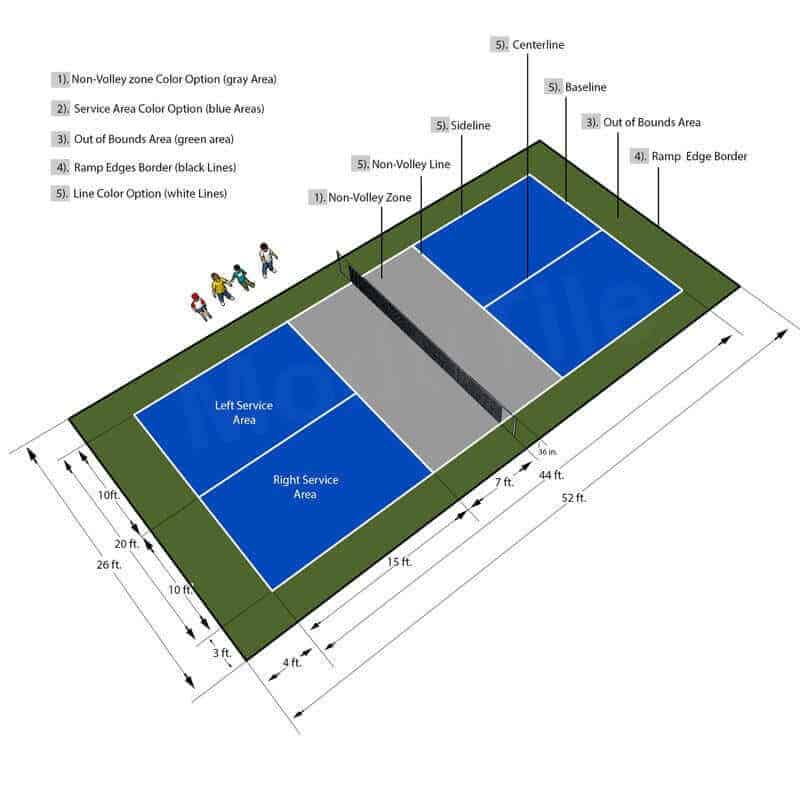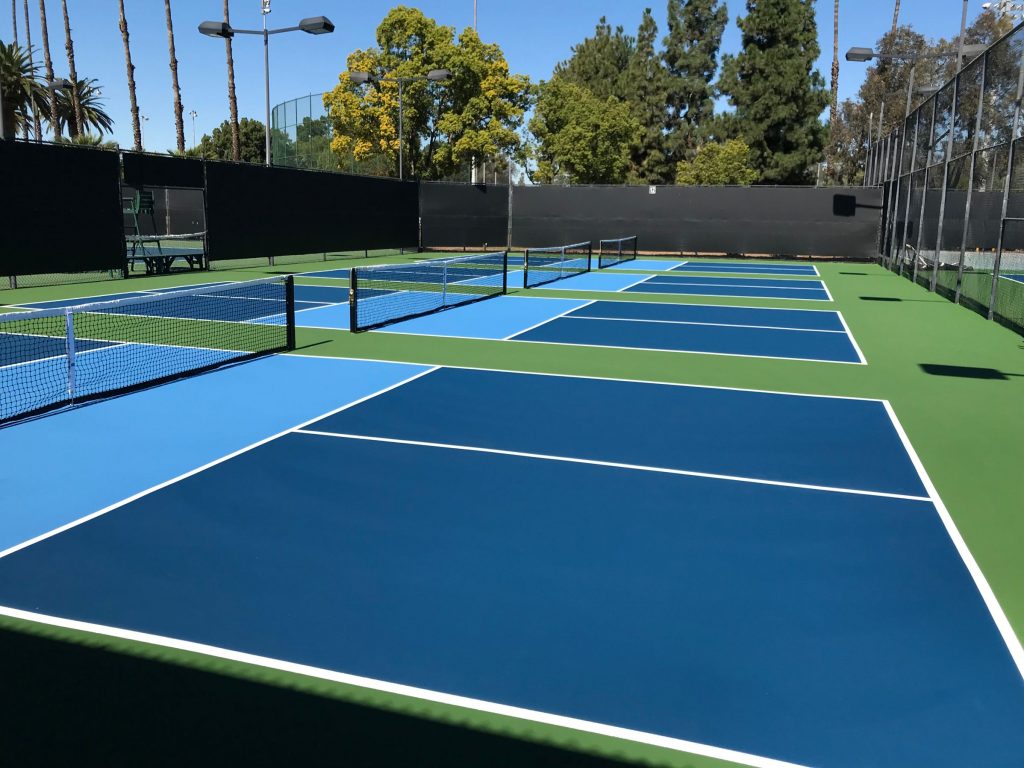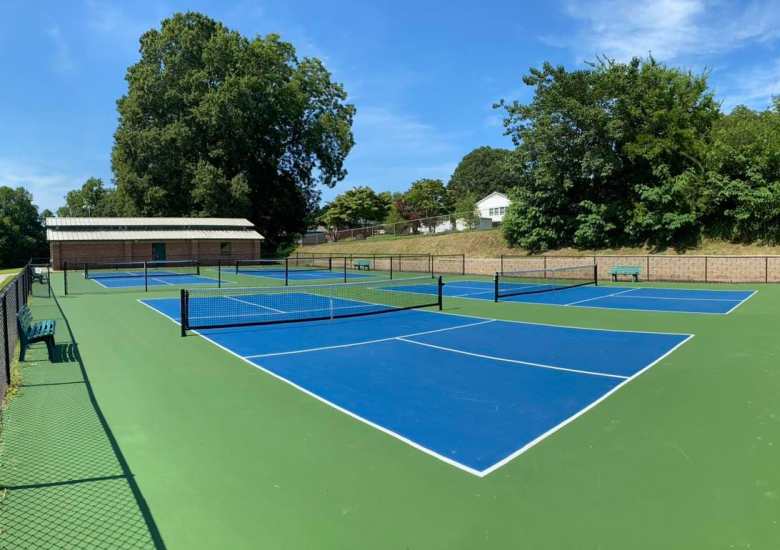Crucial Steps for Successful Pickleball Court Construction in Your Community
Crucial Steps for Successful Pickleball Court Construction in Your Community
Blog Article
Navigating Rules for Pickleball Court Building in Your Area
Creating a pickleball court in your area requires a nuanced understanding of numerous neighborhood regulations, consisting of zoning regulations, structure licenses, and safety and security standards. Each community imposes specific standards that can considerably affect the expediency of your project. Engaging with regional authorities and the area is vital for making certain conformity and promoting assistance. Nevertheless, navigating this regulative landscape can be taxing and complex. What are the crucial actions you should consider to stay clear of possible challenges and make sure a smooth construction procedure?
Comprehending Regional Zoning Laws
When thinking about the building and construction of a pickleball court, comprehending local zoning regulations is crucial to guaranteeing compliance and preventing potential legal issues. Zoning policies dictate exactly how land can be used and typically consist of specs pertaining to leisure centers. These legislations can differ considerably by district, influencing variables such as court placement, lighting, dimension, and noise degrees.
Before starting building, it is necessary to speak with the neighborhood zoning board or preparation division to determine the details regulations that use to your residential property. Particular zones may restrict recreational tasks, while others might need specific licenses or adherence to certain guidelines. It is likewise vital to think about problems, which identify exactly how far structures should be from residential or commercial property lines or other structures.
Additionally, private growths, such as homeowner associations (HOAs), might impose their own rules regarding the construction and usage of pickleball courts. Understanding these laws can stop pricey adjustments or lawsuits down the line. Involving with local stakeholders and neighborhood participants can provide beneficial insights and foster support for your project, ensuring that it aligns with the community's requirements and expectations.
Getting Necessary Building Permits
How does one navigate the complexities of acquiring needed building permits for a pickleball court? The procedure starts with understanding regional laws and demands stated by local authorities. Generally, you will certainly need to submit an in-depth site strategy that details the proposed court dimensions, products, and layout. This strategy must abide by zoning regulations and any type of specific policies referring to recreational facilities.

Once authorizations are acquired, it is essential to stick to any kind of evaluation schedules and needs throughout the building and construction phase. Keeping interaction with regional authorities will certainly assist in a smoother approval process and assistance stay clear of potential obstacles. By extensively preparing and recognizing the allowing landscape, you can effectively navigate the intricacies associated with creating a pickleball court while continuing to be certified with all neighborhood regulations.

Assessing Environmental Influence
A thorough evaluation of environmental effect is important when planning the building of a pickleball court. This evaluation assists identify prospective effects on local communities, water resources, and area appearances. Key aspects to think about consist of website selection-- ensuring that the Discover More court is not built on environmentally sensitive land, such as wetlands or environments for jeopardized varieties
Dirt stability and water drainage patterns ought to be evaluated to avoid erosion and water merging, which might negatively influence surrounding vegetation and wildlife. click here for info Furthermore, the choice of materials is important; selecting lasting and environmentally friendly alternatives minimizes environmental harm.
The implementation of effective stormwater monitoring practices is another crucial aspect, as it helps minimize drainage and sedimentation. Involving with local environmental firms can provide important insights right into laws and ideal techniques specific to your area.
Last but not least, area input can be valuable in recognizing any neighborhood environmental problems and cultivating support for the project. By performing a complete environmental influence evaluation, stakeholders can make certain that pickleball court building and construction aligns with sustainable practices and contributes positively to the community's ecological wellness.
Conforming With Security Specifications
Guaranteeing compliance with security standards is essential for the successful construction and operation of a pickleball court. Abiding by well-known safety laws decreases the threat of mishaps and injuries, ensuring a protected atmosphere for players.
Trick security criteria consist of proper court measurements, surface materials, and lighting demands. The court must meet the official measurements of 20 feet wide by 44 feet long for increases play, with ideal buffer zones to stop injuries from errant spheres. Pickleball court construction. The surface area needs to be constructed from non-slip products to boost traction and lower the likelihood of falls
Furthermore, lighting needs to be sufficient for night play, offering uniform lighting to avoid shadows that can prevent visibility. Regional building codes might additionally dictate particular demands for fencing and net elevation to ensure player safety and stop unapproved accessibility to the court location.
Normal assessments and maintenance are vital to copyright these criteria over time. By focusing on safety compliance, court proprietors not just secure players yet also cultivate a positive online reputation within the area. This commitment to security can motivate better participation and satisfaction of the sporting activity, eventually adding to its development and sustainability.

Engaging the Neighborhood in Planning
Neighborhood participation in the drawing board of look these up pickleball court building can dramatically enhance the project's overall success. Engaging local citizens and stakeholders fosters a feeling of possession and urges collaborative decision-making, which can result in broader assistance for the initiative.
To successfully include the community, organizers ought to start public meetings or workshops, providing a system for residents to articulate their viewpoints and choices pertaining to place, design, and features. Surveys and feedback kinds can also be made use of to collect insights from a larger target market, making sure that varied point of views are considered.
Additionally, forming a neighborhood board of advisers can assist in recurring conversations and address issues throughout the preparation process. This board can include agents from different demographics, such as regional colleges, recreational organizations, and neighborhood watch, thus intensifying neighborhood representation.
Effective communication is key; updates regarding the job must be on a regular basis shared via e-newsletters, social networks, or neighborhood notices. By prioritizing neighborhood engagement, planners can grow enthusiasm, alleviate prospective resistance, and produce a pickleball facility that genuinely reverberates with neighborhood worths and demands. This collective strategy not just improves the task yet also enhances neighborhood ties.
Verdict
In final thought, browsing the complexities of pickleball court construction requires an extensive understanding of regional laws, including zoning legislations, building authorizations, and safety and security requirements. By sticking to these standards and cultivating partnership, effective application of pickleball courts can be achieved, advertising leisure opportunities and community well-being.
Building a pickleball court in your area calls for a nuanced understanding of various regional policies, including zoning laws, structure licenses, and safety and security requirements.When thinking about the construction of a pickleball court, understanding regional zoning regulations is essential to making certain compliance and preventing prospective lawful concerns. By extensively preparing and recognizing the permitting landscape, you can effectively browse the complexities entailed in constructing a pickleball court while continuing to be certified with all regional policies.
In final thought, browsing the intricacies of pickleball court building necessitates an extensive understanding of regional policies, including zoning legislations, structure authorizations, and safety standards. By sticking to these guidelines and promoting collaboration, effective implementation of pickleball courts can be achieved, promoting leisure chances and community health.
Report this page